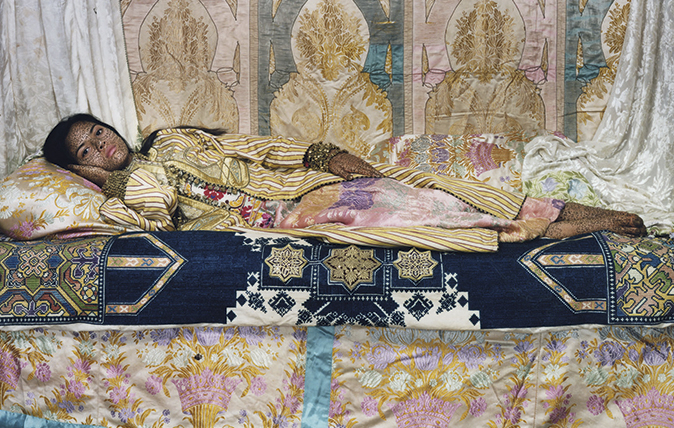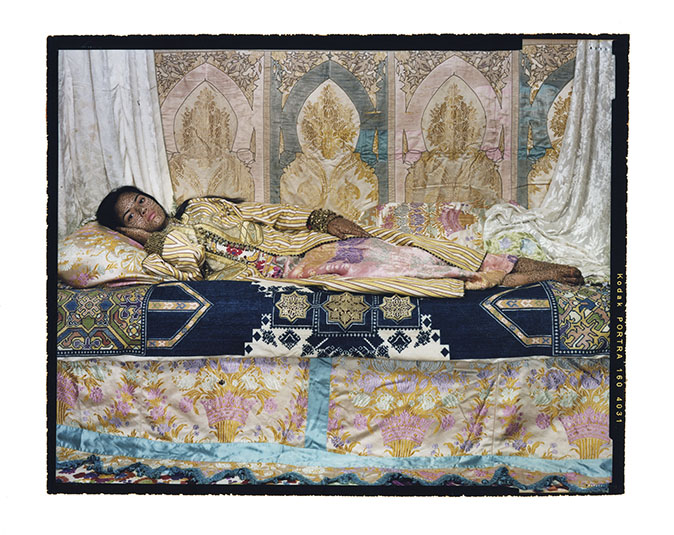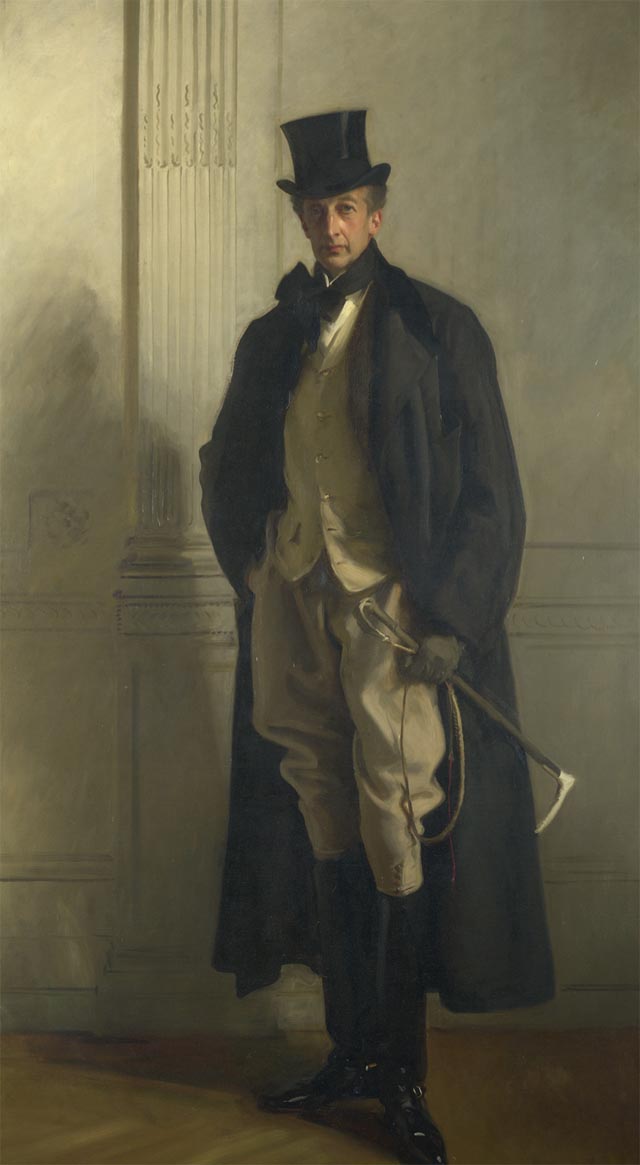My favourite painting: Guy Goodfellow
'This highly decorative, impactful piece provides a window into a secretive world'



Harem Revisited #33, 2012, by Lalla Essaydi (b.1956), 48in by 60in, © Lalla Essaydi, New York / Courtesy Edwynn Houk Gallery, New York
Guy Goodfellow says:
I find this image transfixing. Having long admired 19th- and early-20th-century Orientalist art, I enjoy Lalla Essaydi’s fresh approach to it. Here, the artist re-creates a French School harem pose, herself applying the hennaed Islamic calligraphy covering the woman’s body. Antique textiles are central to my projects and those used in this composition are sensational. Her bed, wrapped in a strong indigo-blue carpet, contrasts with the sweeter surrounding colours and brings the subject forward in the composition. Her layers of clothing appear to extend out into the profusion of silks around her, adding to her allure. This highly decorative, impactful piece provides a window into a secretive world, a place the artist describes as a “dangerous frontier where sacred law and pleasure collide”.
Guy Goodfellow is an interior designer and producer of furnishing fabrics
John McEwen comments on Harem Revisited #33: In an explanatory statement, the artist writes of Islamic culture: ‘The presence of men defines public space, the streets, the meeting places. Women are confined to private spaces, the architecture of their homes… Their confinement is a decorative one… In photographing women inscribed with henna, I emphasize their decorative role, but subvert the silence of confinement. These women ‘speak’ visually.
Furthermore, the calligraphic writing, a sacred Islamic art form only recently accessible to women, constitutes an act of rebellion. Applying henna, a form of adornment considered “women’s work”, further underscores the subversion of the act… There is the very different space I inhabit in the West, a space of independence and mobility. It is from there that I can return to the landscape of my childhood in Morocco, and consider these spaces with detachment and new understanding.’
The henna calligraphy that ‘decorates’ the woman’s skin is illegible, but draws from the artist’s stream-of-consciousness. ‘I am interested in exploring the thin line between Eastern and Western associations of the harem: the harem as sin, as woman, as space.’
Exquisite houses, the beauty of Nature, and how to get the most from your life, straight to your inbox.
The pose is an ironic retort to the seductive odalisque purveyed by European Orientalists. The woman is camouflaged by layers of elaborate, vintage caftans of the type used in wedding ceremonies and to decorate palaces and the harem. She becomes herself an object of decoration.
Lalla Essaydi’s perspective has been formed by a convergence of territories: born and brought up in Morocco, she raised her children in Saudi Arabia, completed her education in Europe and the USA, and now works in Boston and Marrakech. Her art spans painting, video, film, installation and photography. It can be seen in the ‘I Am’ exhibition, currently touring the USA until November 2018.

My favourite painting: David Starkey
David Starkey shares the one painting he would own, if he could

My favourite painting: Nicholas Coleridge
Nicholas Coleridge chooses Maharana Jagat Singh attending an elephant fight by Syaji and Sukha as his favourite painting

My favourite painting: Jacqueline Wilson
'I looked at this painting and decided to write about a Victorian circus girl one day'
Country Life is unlike any other magazine: the only glossy weekly on the newsstand and the only magazine that has been guest-edited by His Majesty The King not once, but twice. It is a celebration of modern rural life and all its diverse joys and pleasures — that was first published in Queen Victoria's Diamond Jubilee year. Our eclectic mixture of witty and informative content — from the most up-to-date property news and commentary and a coveted glimpse inside some of the UK's best houses and gardens, to gardening, the arts and interior design, written by experts in their field — still cannot be found in print or online, anywhere else.
